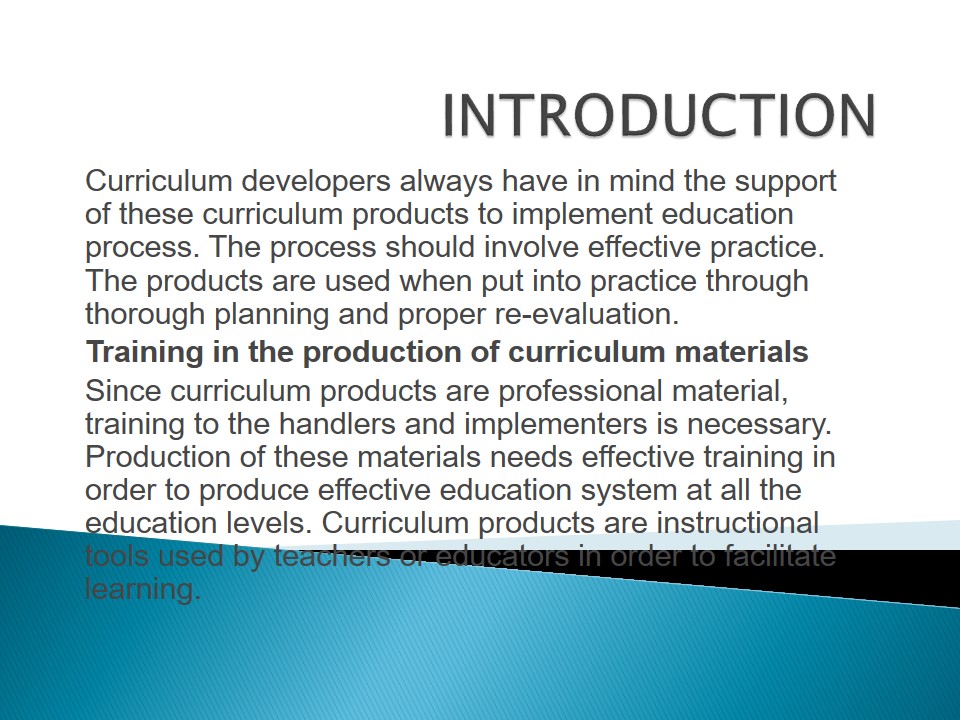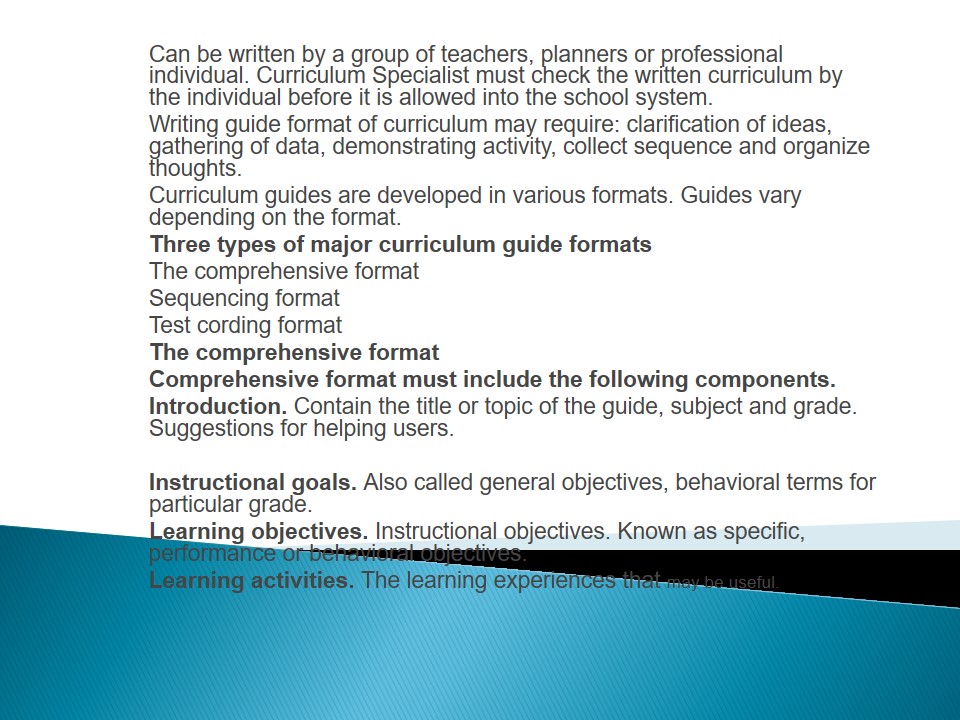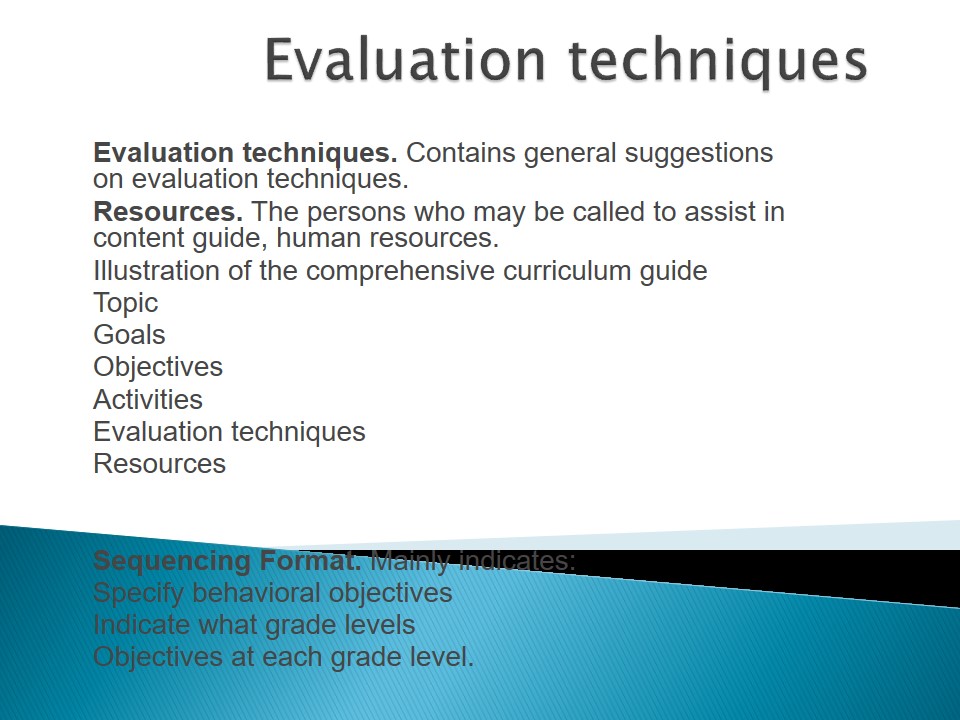Introduction
Curriculum developers always have in mind the support of these curriculum products to implement education process. The process should involve effective practice. The products are used when put into practice through thorough planning and proper re-evaluation.
Training in the production of curriculum materials
Since curriculum products are professional material, training to the handlers and implementers is necessary. Production of these materials needs effective training in order to produce effective education system at all the education levels. Curriculum products are instructional tools used by teachers or educators in order to facilitate learning.

Major naming mechanisms for the curriculum products
Curriculum materials are named depending on the producers, as stated namely:
- Curriculum bulletins: to reflect the message contained in them.
- Curriculum guides: giving direction on the curriculum implementation.
- Courses of study: named based on the content material
- Syllabi: the study topic guidelines in all subjects,
Major Curriculum products
Curriculum guides, courses of study and syllabi
Resource units
It is better to note the interrelations of part a. However, they can be defined as follows.
Curriculum guide: This may cover a single course or a particular area in a particular grade level. For instance, all subjects at a given grade level, an area of interest mostly applicable in two or more course level grades. A sequence in a discipline e.g. language arts. It can also apply to an area of interest in two or more course levels for example an occupational safety.

Course of study
- Course of study. This is a detailed plan for a single course. It includes text materials, main example is Man. This is course of study which has widely been used in both schools an on television. It shows what is to be taught either in summery or in complex text.
- Syllabus. Is an outline of topics to be covered by the teacher in a given single course. Each subject or course unit has got the syllabus to be followed by the teacher.
Curriculum Guide Formats
Curriculum guide formats helps teachers derive ideas for developing their own resource units, learning units and lesson plans. In structural situations, it specifies minimum objectives that the students should be able to do or muster in a given discipline( Peter,2008).Objectives for each marking period may also be shown. It helps in identification of teaching materials and also suggests learning activities.
Can be written by a group of teachers, planners or professional individual. Curriculum Specialist must check the written curriculum by the individual before it is allowed into the school system.
Writing guide format of curriculum may require: clarification of ideas, gathering of data, demonstrating activity, collect sequence and organize thoughts.
Curriculum guides are developed in various formats. Guides vary depending on the format.
Three types of major curriculum guide formats
- The comprehensive format;
- Sequencing format;
- Test cording format.
The comprehensive format
Comprehensive format must include the following components.
- Introduction. Contain the title or topic of the guide, subject and grade. Suggestions for helping users.
- Instructional goals. Also called general objectives, behavioral terms for particular grade.
- Learning objectives. Instructional objectives. Known as specific, performance or behavioral objectives.
- Learning activities. The learning experiences that may be useful.


Evaluation techniques
- Evaluation techniques. Contains general suggestions on evaluation techniques.
- Resources. The persons who may be called to assist in content guide, human resources.
Illustration of the comprehensive curriculum guide:
- Topic;
- Goals;
- Objectives;
- Activities;
- Evaluation techniques;
- Resources.
Sequencing Format. Mainly indicates:
- Specify behavioral objectives;
- Indicate what grade levels;
- Objectives at each grade level.

Reference
Peter, F. (2008). Developing the curriculum. Boston: Allyn & Bacon.